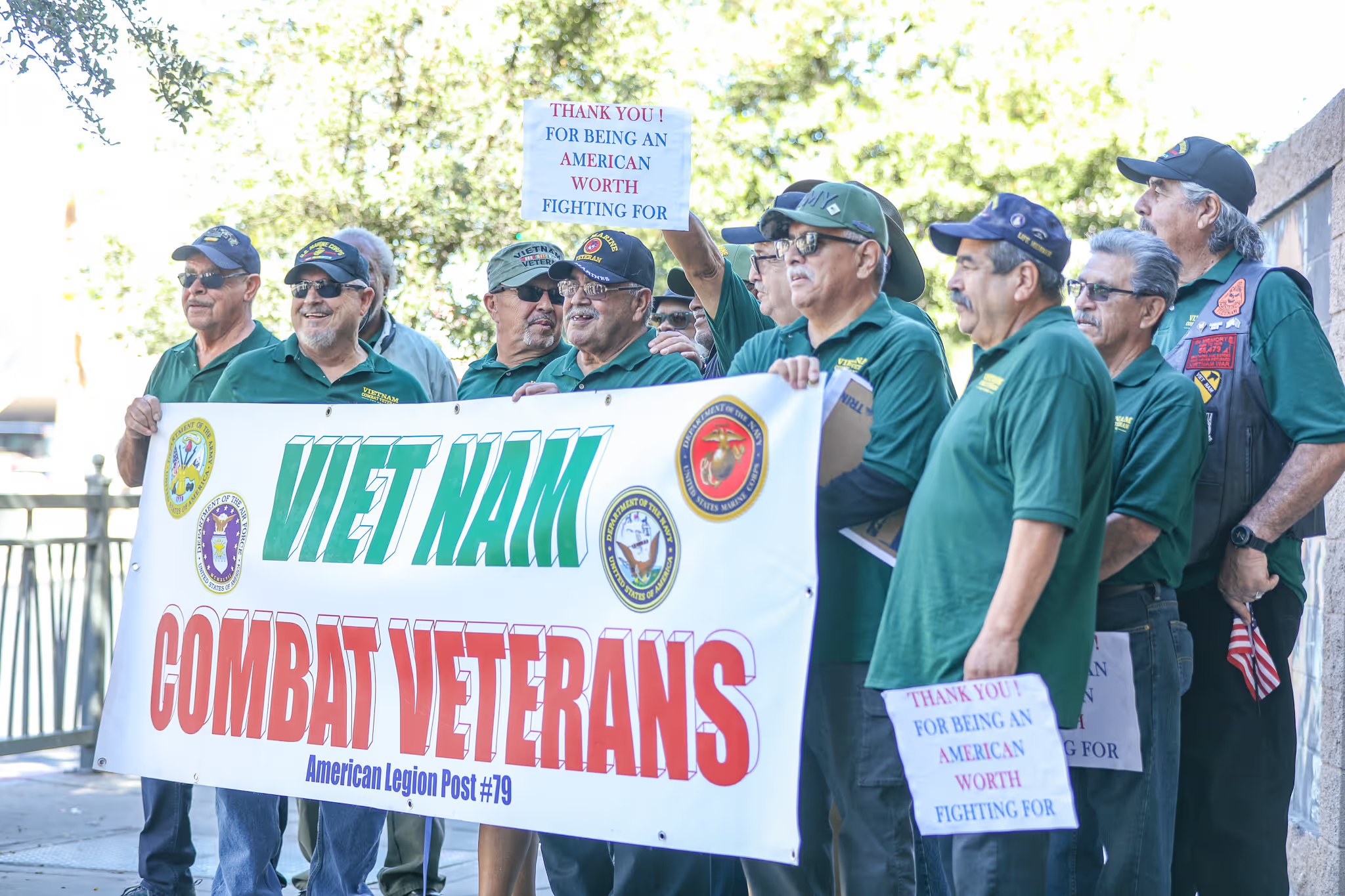Listen to Michael Blecker, Executive Director of Swords to Plowshares, discuss how Swords to Plowshares was formed and came together with the support of the community. (3:18)
The military-civilian divide is a chasm; the clear majority of civilians have little knowledge of military culture and resources. From the outset of the wars in Afghanistan and Iraq, the public overwhelmingly wanted to honor veterans. This crossed political and ideological lines; the war could be debated, but the warriors were honored.
But for many, wars and consequences were an abstraction. For the small percentage of the population who serve, their families and their advocates, the fallout was swift and shocking. No one was ready for the impact—the numbers deployed, the horrific injuries, the multiple tours, and the shocking lack of forethought. Yellow ribbons or no.
Iraq and Afghanistan veterans may have been in the news, but community-based agencies and the VA were struggling to maintain services for all veterans while developing programs for new veterans. Just as a new generation of veterans were flooding back home, previous era veterans, especially those over 55, began manifesting increased need associated with age and exacerbated by military service-related conditions.
Insular Nature of Veteran Organizations
Just as there is a military-civilian divide, there is a lack of trust between veteran specific organizations and non-veteran specific organizations. While administering regrants to agencies in Texas and California, we found that non-veteran specific agencies had trouble reaching out to veteran organizations. This occurred even where they were offering needed services and were rebuffed by what can be described as the insular nature of veteran organizations. This may stem from a lack of trust that an outsider provider knows how to serve veterans, understands the needs and resources, and can provide culturally-informed care.
It is incumbent on non-veteran providers to seek out such expertise, but it is incumbent on veteran providers to increase the safety net as not all veterans seek veteran-specific care. On the other side of that coin, we found that non-veteran specific organizations, while eager to assist veterans, did not understand the investment in time and commitment required to gain some degree of cultural knowledge and to develop effective client outreach.
The Fight for Veterans’ Fair Share
We applaud volunteerism but assisting veterans and their families costs cold hard cash. This should be addressed at the outset—just as we fund bullets and boots, so should we fund the enduring costs of war and military service. In fact, the budgets for the DoD and VA are separate. Further, the VA, despite being the second largest federal agency and the largest healthcare system, must have its budget re-authorized yearly.
This is all woefully inefficient, but it is the system we find ourselves negotiating. And because most care is delivered in communities, and only half of all veterans access the VA, much of the cost of war is externalized to localities and individuals.
Private and corporate philanthropy dedicated to veteran care is miniscule; the harsh truth is that two-tenths of one percent of all charitable giving is directed to military and veteran agencies. Just as veterans have fought for care and benefits, they have had to fight to sustain such services through funding.
While veteran issues do not exist in a vacuum and their identities intersect with other distinct groups, some funders will only keep veterans in a smaller funding portfolio rather than reflect their needs across their areas of giving.
Community-Based Care to Collective Impact
Over the past fifteen or so years, community collaboratives have popped up throughout the nation. While Vietnam era veterans had established their own systems of care, a more widespread segment of the community wanted to respond to post-9/11 veteran needs.
Veteran and military organizations such as the Iraq and Afghanistan Veterans of America (IAVA), Give an Hour, Semper Fi Fund, Operation Homefront, and others began organically, providing everything from transportation, supports for military children, financial assistance, housing assistance and homeless prevention, case management, mental health services, and advocacy.
Organizations and institutions that had been around for years also took up the charge and dedicated new programs to veterans, such as the National Veteran Legal Services Program, DAV, US Vets, Tragedy Assistance Program for Survivors (TAPS), and others.
While different in operations, structure, and history, a shared dedication to veterans and their families brought different organizations and individuals together who might never have spoken, much less collaborated. The walls between local VAs, community members, military bases, guard and reserve began to crumble through the relentless work of community advocates.
The VA established post-9/11 outreach workers and expanded Vet Center staffing. All of this also created a patchwork of care, dubbed the “sea of good will,” comprehensive for some, confusing and difficult to access for most.
The broader community still struggles to make sense of these resources and many have long proposed a directory, with few attempts and little progress. Centralized directories have proven a near-impossible task, as resources change rapidly and the quality of services varies significantly. How does one sift through and make sense of so much information, especially veterans and their families who have needs to be met?
The Bush Institute with The Institute for Veterans and Military Families developed a series of reports to assist in evaluating the efficacy of military and veteran charities. Comparing organizations was too akin to apples and oranges, so instead they focus on connection to community, sustainability, cultural awareness, and other factors that transcend specific service categories.
Whatever an agency or advocate focus is, the simple fact is you must do the work every day, engage with your community and with the broader community of care, and forge relationships, to feel confident in referrals.
Transcending Geography and Eligibility Barriers through Subject-Based Collective Impact
Veteran population density varies regionally and subject matter expertise and/or veteran-specific resources can be scarce. As such, local providers must rely on the national web of veteran-specific advocates and experts and join with non-veteran specific community partners to address local need.
Communities from the ground up need to develop and maintain multiple tracks of outreach, programming, and care for these vastly different client generations. In the case of new veterans, in order to prevent and mitigate bad outcomes with the goal of stability—to provide housing, employment and financial supports, legal services, counseling and peer support. For older veterans, to treat old wounds, provide housing, in-home health services, disability income, and geriatric psychological services.


.avif)



